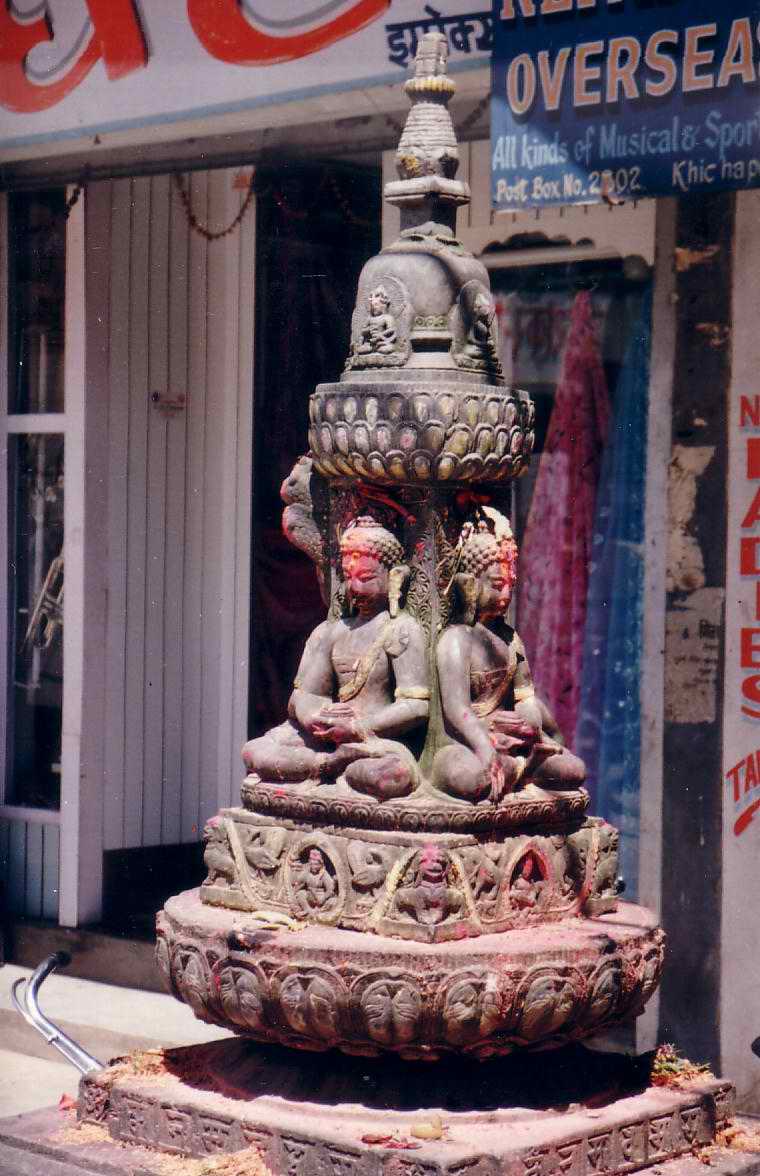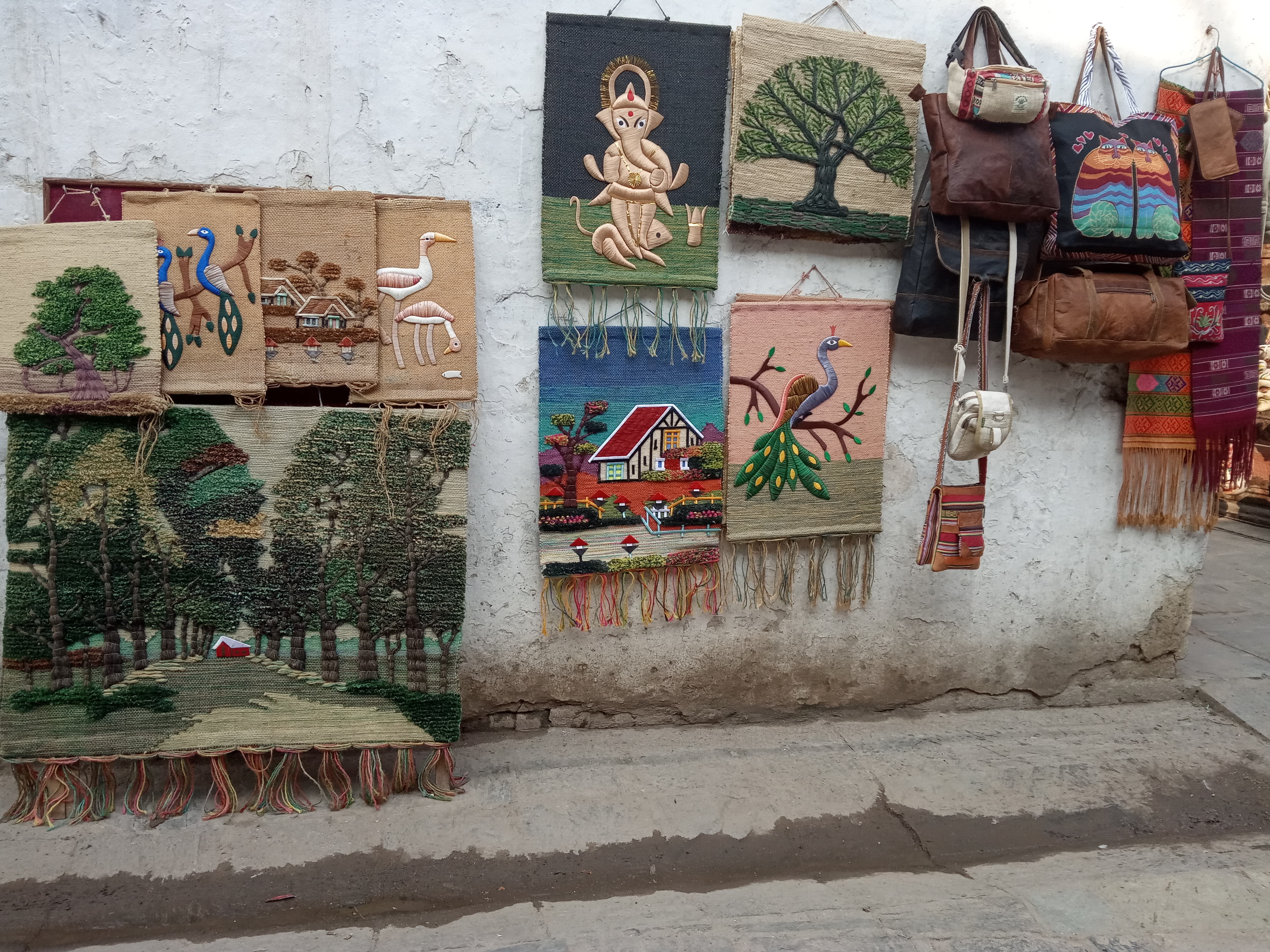|
Nepal Academy Of Fine Arts
Nepal Academy of Fine Arts (NAFA) is the umbrella organization of Nepali artists, researchers and art critics, and an arts institution for research and for exhibitions. A museum in Kathmandu, in a neoclassical building from the 1930s,''Nepal's national art collection at risk in building damaged by earthquake'' , 8 May 2015. presents collections of both traditional and contemporary paintings and other works. It was formerly part of . [...More Info...] [...Related Items...] OR: [Wikipedia] [Google] [Baidu] |
Sita Bhawan
Sita Bhawan is a Rana palace in Kathmandu, the capital of Nepal. The palace complex, located East of the Narayanhity Palace, was incorporated in an impressive and vast array of courtyards, gardens and buildings. Sita Bhawan was built by Bhim Shamsher Jang Bahadur Rana in 1929 for his wife Her Highness Sri Teen Sita Bada Maharani Deela Kumari Devi.Prakash A Raj, "Maharaj Bhim Shumsherko Jiwani," Nabin Publications, History Sita Bhawan was built by Bhim Shamsher Jang Bahadur Rana in 1928 for his bada Maharani wife, Her Highness Sri Sita Bada Maharani Deela Kumari Devi. She lived in this palace until its nationalisation in 1969. Current status Sita Bhawan is largely occupied by, Nepal Children Organization (NCO) and Nepal Academy of Fine Arts (NAFA). Earthquake of 2015 A large section of this palace was destroyed by 2015 earthquake. Future of this historic building is unknown. Gallery File:Baithak.jpg, One of the Baithak room of Tangal Durbar,kathmandu,Nepal File:Brick of Tang ... [...More Info...] [...Related Items...] OR: [Wikipedia] [Google] [Baidu] |
Nepalese Sculpture
The sculpture of Nepal is best known for small religious figures and ritual objects in bronze or copper alloy, but also has other strengths. The Newar people of Nepal had a long-lasting specialism in casting small bronze figures, mostly religious and especially Buddhist, considerable numbers of which were exported to India and Tibet over many centuries. Stylistic history Though the most common survivals are small figures, for reasons of climate and history, Nepal also has an unusual quantity of surviving large sculptures in wood and bronze, which have mostly been lost in India, where significant quantities of metal sculpture from temples have only survived in Tamil Nadu and other parts of the far south. Though there are small figures similar to those in bronze, most woodcarving is architectural, including the elaborate Newar windows. Nepali sculpture draws influences from the sculpture and artistic styles of Indian art, of the Gupta and Pala Empires in particular. The majorit ... [...More Info...] [...Related Items...] OR: [Wikipedia] [Google] [Baidu] |
Museums In Kathmandu
The ancient and refined traditional culture of Kathmandu, for that matter in the whole of Nepal, is an uninterrupted and exceptional meeting of the Hindu and Buddhist ethos practiced by its highly religious people. It has also embraced in its fold the cultural diversity provided by the other religions such as Kirat, Jainism, Islam and Christianity. The ancient trade route between India and Tibet that passed through Kathmandu enabled fusion of artistic and architectural traditions of other cultures to be amalgamated with local architectural and artistic culture. The City Core has most of the remarkable cultural wealth that evolved during the reign of the Malla kings between 15th and 18th centuries. The city was filled with sculptures, pagodas, stupas and palace buildings of exceptional beauty. There are also 106 monastic courtyards (known as baha or bahi) known for their art and piety. The level of skill of the local artisans are the exquisite wood carving, stone carving, metal ca ... [...More Info...] [...Related Items...] OR: [Wikipedia] [Google] [Baidu] |
Nepalese Art
Nepali or Nepalese may refer to : Concerning Nepal * Anything of, from, or related to Nepal * Nepali people, citizens of Nepal * Nepali language, an Indo-Aryan language found in Nepal, the current official national language and a language spoken in India * Nepal Bhasa, a Sino-Tibetan language found in Nepal, formerly the official national language * Nepalese literature * Nepalese cuisine * Nepalese culture * Nepali cinema * Nepali music Other uses * ''Nepali'' (film), a 2008 Indian Tamil-language film See also * Nepal (other) * * * Languages of Nepal * Nepal Nepal (; ne, :ne:नेपाल, नेपाल ), formerly the Federal Democratic Republic of Nepal ( ne, सङ्घीय लोकतान्त्रिक गणतन्त्र नेपाल ), is a landlocked country in S ... is a south Asian country with a population of nearly 30 million. {{disambiguation Language and nationality disambiguation pages ... [...More Info...] [...Related Items...] OR: [Wikipedia] [Google] [Baidu] |
2010 Establishments In Nepal
1 (one, unit, unity) is a number representing a single or the only entity. 1 is also a numerical digit and represents a single unit of counting or measurement. For example, a line segment of ''unit length'' is a line segment of length 1. In conventions of sign where zero is considered neither positive nor negative, 1 is the first and smallest positive integer. It is also sometimes considered the first of the infinite sequence of natural numbers, followed by 2, although by other definitions 1 is the second natural number, following 0. The fundamental mathematical property of 1 is to be a multiplicative identity, meaning that any number multiplied by 1 equals the same number. Most if not all properties of 1 can be deduced from this. In advanced mathematics, a multiplicative identity is often denoted 1, even if it is not a number. 1 is by convention not considered a prime number; this was not universally accepted until the mid-20th century. Additionally, 1 is the s ... [...More Info...] [...Related Items...] OR: [Wikipedia] [Google] [Baidu] |
National Museum Of Nepal
National Museum is the first museum that lies on the bottom level of Swayambhu, a holy hill of Kathmandu Valley. It occupies about 50 Ropani of land with different types of buildings, gardens, and opens space in its compound. Now it provides the service to collect and display rare and precious art heritages. The history of this museum shows that at the beginning it was an Arsenal house, built by Prime Minister General Bhimsen Thapa in 1824. After it, in 1926 Rana Prime Minister Chandra Shumsher added two wings in the north and south of the main building and it was given the name of Silkhana Museum. Later in 1938 Rana Prime Minister Juddha Shumsher changed its name to Nepal Museum and its doors were opened to the public on 12th February 1939 (Amatya,1999:45). In the beginning, the buildings of this museum were not constructed for the purpose of storage, conservation, preservation, and displays of art heritages. While it developed as a museum it realized difficult to manage it inappr ... [...More Info...] [...Related Items...] OR: [Wikipedia] [Google] [Baidu] |
Nepal Art Council
Nepal Art Council () is a non-profit organization established in 1962 (2019 BS) to promote the art and the artist of Nepal. It operates an art gallery located at Baber Mahal, Kathmandu, with an area of about 29,400 sq. ft. History King Mahendra had appointed the then Prime Minister Kirti Nidhi Bista as the founding President, Lain Singh Bangdel as the General Secretary and Mrigendra SJB Rana as the treasurer. It was conceived as a Public-Private partnership organisation. The current building was constructed in 1991 and was designed by Shankar Nath Rimal. See also * National Museum of Nepal * Nepal Academy of Fine Arts Nepal Academy of Fine Arts (NAFA) is the umbrella organization of Nepali artists, researchers and art critics, and an arts institution for research and for exhibitions. A museum in Kathmandu, in a neoclassical building from the 1930s, References {{Nepal-stub Arts in Nepal Arts organizations Organisations based in Nepal 1962 establishments in Nep ... [...More Info...] [...Related Items...] OR: [Wikipedia] [Google] [Baidu] |
Provinces Of Nepal
The provinces of Nepal ( ne, नेपालका प्रदेशहरू, translit=Nepālkā Pradeśharū) were formed on 20 September 2015 in accordance with Schedule 4 of the Constitution of Nepal. The seven provinces were formed by grouping the existing List of districts in Nepal, districts. The current system of seven provinces replaced an earlier system where Nepal was divided into 14 List of zones of Nepal, administrative zones which were grouped into five Development regions of Nepal, development regions. History A committee was formed to restructure administrative divisions of Nepal on 23 December 1956 and in two weeks, a report was submitted to the government. In accordance with The ''Report On Reconstruction Of Districts Of Nepal, 2013'' (), the country was first divided into total 7 ''Kshetras'' (area). # (Unnamed) # Madesh Kshetra # Bagmati Kshetra # Gandaki Kshetra # Lumbini Kshetra # Karnali Kshetra # Mahakali Kshetra In 1962, all ''Kshetras'' were dissolv ... [...More Info...] [...Related Items...] OR: [Wikipedia] [Google] [Baidu] |
Nepalese Architecture
Nepali architecture or Nepalese architecture is a unique blend of artistic and practical considerations. Situated between the trade routes of India, Tibet and China, Nepali architecture reflects influences from these cultural strongholds. The pagoda architectural tradition figures prominently among Hindu temples in the country. In contrast, Buddhist temples reflect the Tibetan tradition of Buddhist architecture and the stupa features prominently. Mugal, summit and dome styles also have great scope in Nepal. Whilst significant influence for Nepal's architecture comes from India, there is also a distinct influence from the. Nepal's architectural history Nepal has a variety of distinctive architectural features which are represented in residential, religious and public buildings. Much of Nepal’s architectural history is aligned with the dynasties that ruled at a particular time. Global industrialisation, which occurred between the 18th and 19th centuries, transformed most of t ... [...More Info...] [...Related Items...] OR: [Wikipedia] [Google] [Baidu] |
Nepalese Handicrafts
Nepalese handicraft history can be traced back to the Stone Age when human beings were inadequate of tools of every things. The history of artistic handicrafts only began during the 5th century AD, when different religions began to form their bases among the people of Nepal. Hence we see a lot of religious influence on Nepalese handicrafts. Introduced by the Nordic Aryans, mixed with different groups of Mongolians, nurtured by Buddhist and Hindu concepts adapted the taste of market. History The historical development of the Nepalese handicraft industry is very old although has its rise and falls. According to the reference found in Kautilya's Economics about various productions and exports from Nepal, during the time of Chandra Gupta Mouriya, in the fourth century, Nepal was known for quality rainproof woolen blanket woolen blankets. The blankets were made of eight pieces joined together of black color known as "bhiringisi" as well as "apasaraka". Similarly the good quality blank ... [...More Info...] [...Related Items...] OR: [Wikipedia] [Google] [Baidu] |




